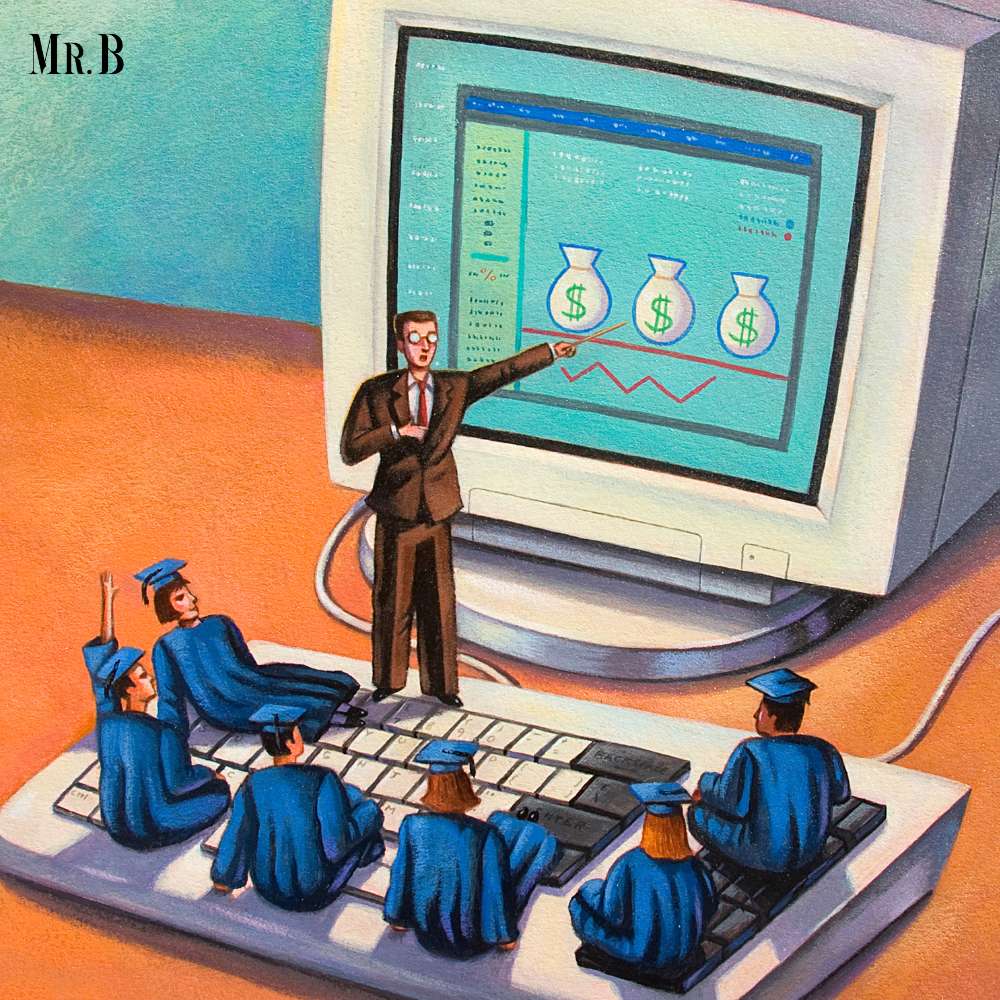Technology has created an impact in many sectors of work today. Technology in education is no exception. Technology has been a game-changer in all areas of work. In a traditional classroom setting, students are given a lot of information at a time which can be overwhelming for them to process. It provides access to various online sources that support independent learning. It also helps to clarify the concepts by making them simpler.
The traditional teaching style does not help the students as much as a visual teaching will help them. An instructional video about a concept with pictorial representation to grasp the concept better will help the students. As advances in technology continue teachers will be able to help students to acquire newer and better skills. Tools like Augmented Reality or Virtual Reality will impart visual learning experience to students. So schools also have started considering the implementation of the same.
Let’s learn more on What is the Importance of Technology in Education:
1. Engagement and Motivation:
Technology in education has the remarkable ability to make learning more engaging and motivating. Interactive lessons, multimedia content, and gamified experiences capture students’ interest, fostering a deeper desire to learn.
2. Personalized Learning:
Technology allows for tailored, personalized learning experiences. Adaptive software and online resources enable students to progress at their own pace, addressing individual needs and preferences.
3. Accessibility and Inclusivity:
Technology breaks down barriers to education. It provides access to learning resources for individuals with disabilities, those in remote areas, and students from diverse backgrounds, ensuring inclusivity.
4. Enriched Content:
Digital resources offer an abundance of multimedia content, from educational videos to interactive simulations. This enriches the curriculum, providing students with a broader and more immersive learning experience.
5. Global Connectivity:
Technology connects students to a world of information. It enables communication and collaboration with peers, experts, and educators from around the globe, fostering global awareness and perspective.

6. Real-World Preparation:
The use of technology in education prepares students for the real world. They acquire digital literacy, critical thinking, problem-solving, and research skills that are increasingly valuable in today’s workforce.
7. Efficiency and Productivity:
Technology streamlines administrative tasks for educators, freeing up more time for teaching and personalized interaction with students.
Measures for Implementing Technology in Education
1. Invest in Framework:
Schools and colleges need to invest in robust IT infrastructure, including high-speed internet, reliable hardware, and security measures to ensure a seamless technology-integrated environment.
2. Curriculum Placement:
Educators should align technology integration with the curriculum, ensuring that it complements and enhances the learning objectives and outcomes.
3. Access to Devices:
Educational institutions should provide access to devices such as laptops or tablets, either through school-issued equipment or by facilitating bring-your-own-device (BYOD) programs.
4. Digital Content:
Curriculum content should include a mix of digital resources, including e-books, educational websites, and online learning platforms.
5. Professional Development:
Schools and colleges must invest in training and professional development for educators. This equips teachers with the necessary skills to effectively use technology in the classroom.
6. Support and Maintenance:
A system for ongoing tech support and maintenance should be in place to address technical issues promptly and minimize disruptions.

Importance of Training for Educators
1. Productive Technology Utilization:
Training equips educators with the skills to efficiently use technology, allowing them to create engaging lessons and adapt to various learning needs.
2. Higher Confidence:
Proper training boosts educators’ confidence in using technology, resulting in more effective classroom integration.
3. Effective Curriculum Design:
Educators trained in technology integration can design and implement curriculum that aligns with educational standards and leverages the advantages of digital resources.
4. Problem Solving:
Training provides educators with the ability to troubleshoot common technical issues, reducing frustration and disruptions during lessons.
5. Innovation and Creativity:
Educators who receive training are more likely to explore innovative teaching methods and experiment with technology to enhance the learning experience.
6. Educational Understanding:
Training goes beyond the technical aspect, emphasizing pedagogical understanding. Educators learn how to align technology with educational goals and measure its impact on student learning.
How Government can collaborate with Schools to Implement Technology in Education?
1. Grants for Infrastructure Investment
One of the primary ways government can support schools in implementing technology is through infrastructure investment. This includes providing schools with the necessary physical infrastructure, such as high-speed internet connectivity, secure networks, and modern hardware. Access to a reliable technological foundation is essential for schools to embark on their tech-enhanced educational journey.
2. Funding
Financial support in the form of funding and grants can be a game-changer for schools. Governments can allocate funds specifically for technology integration in education. This financial support can be used for purchasing devices, software, and educational technology resources, ensuring that schools have the tools they need.

3. Professional Empowerment:
Effective technology integration requires skilled educators. Government can collaborate with schools to provide professional development opportunities for teachers. This training equips educators with the skills and knowledge to effectively integrate technology into their teaching practices.
4. Access to Digital Resources
Government can work on creating digital repositories and platforms that provide schools with access to a wealth of digital resources, including educational websites, e-books, and multimedia content. These resources not only enhance learning but also reduce the financial burden on schools.
5. Policies and Regulations:
Government can set policies and standards that guide the effective use of technology in education. These policies can ensure the privacy and security of student data, establish best practices, and promote consistency in technology implementation.
6. Research and Scrutiny:
Collaboration between government and schools can support research and evaluation of technology in education. This research can help identify the most effective tools and methods, enabling schools to make informed decisions about their technology investments.
Conclusion:
The importance of technology in education is undeniable. It enhances engagement, personalizes learning, and promotes inclusivity. Implementing technology in education requires careful planning, investment in infrastructure, and the integration of digital content into the curriculum. Additionally, educators need training and professional development to effectively use technology in the classroom. Training not only equips them with technical skills but also fosters pedagogical understanding and encourages innovative teaching methods.
The adoption of technology in education is an investment in the future, equipping students with the skills and knowledge they need to thrive in an increasingly digital and interconnected world. It empowers educators to create dynamic, engaging learning environments that prepare students for success in a rapidly evolving global landscape.







